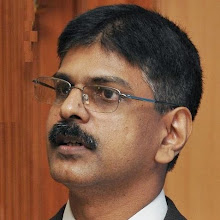
Enterprise asset Maintenance is the process of managing an organization’s assets throughout their life cycle - right from requisition to retirement.
“Assets” in this context can be defined as any equipment, vehicle or facility which plays a key role in the core business of the enterprise.

Breakdowns in industrial manufacturing systems can have a significant impact on the profitability of a business. Expensive production equipment is idle, resource / technician is no longer optimized and the ratio of fixed costs to product output is affected negatively. Equipment downtime is the major bottleneck for all production plants and maintenance facilities.
Taking a proactive stance towards the maintenance of your equipment is crucial for achieving maximum efficiency, and to extend the life of your assets.
Built on a Java™ Platform, Enterprise Edition (Java EE) component-based Internet architecture, inCise Asset Maintenance software, fits in any modern enterprise technology infrastructure and integrates easily with your business systems.
Equipment productivity is one of the key factors in competitive high volume production environment.
– Effects factory capacity (availability)
– Drives manufacturing cost
– Impacts production schedules (predictability)
Typical Overall Equipment Effectiveness (OEE) estimates; 40% – 60% range representing a huge potential opportunity for deploying an Enterprise Asset maintenance solution. inCiseEAM improves the company's operational and maintenance procedures, both immediately and in the long term. Based on industry standards, the functionality for collecting data from the process and control systems allows the proportion of condition-based maintenance (CBM) to be maximized, and the risk of breakdowns and disruptions, to be minimized.
Any breakdown on the manufacturing floor, facility or any other business process will create failed deliveries, idle time, missed customer commitments . In today’s competitive environment, it’s beneficial for organizations to know which Asset/equipment needs preventative maintenance for better planning, scheduling and allocation of resources. Organizations that are using lean manufacturing practices or trying to achieve continuous flow manufacturing must be able to keep all of their assets in good condition. It is crucial to have a complete understanding of which assets an organization has available at any given time in order to achieve business goals.
Many organizations have been using best-of-breed enterprise asset management such as (inCiseEAM) to manage their overall assets. inCiseEAM application provides an organization with specific functionalities needed for asset /Equipmet maintenance processes. Maintenance managers need to understand which assets they currently possess; what preventative maintenance is needed, tools required for accomplishing the maintenance work, procedure to be followed, resource requirements and spare parts. By using inCiseEAM, the right information can be provided to the right individuals at the right time. This can help reduce the overall manufacturing and maintenance cost.
inCisEAM enables a shift in focus from maintenance recording to maintenance planning; helping decision makers at all levels to understand the status of their Equipments, Systems, Facilities, Vehicles as well as the availability of personnel responsible for the end-to-end maintenance process.
inCiseEAM is a Business Solution and a not a technology solution. It is to help Plant Managers, Maintenance Managers and Technicians to collaborate and do their job, better, quicker, with ease and to enhance productivity and reduce down-time.
